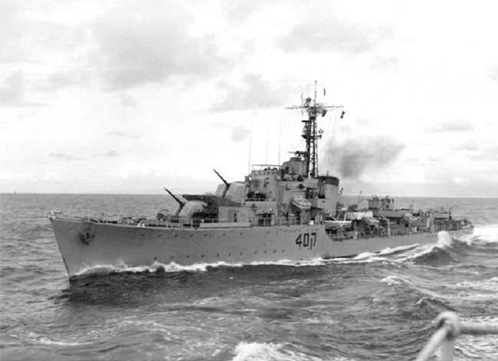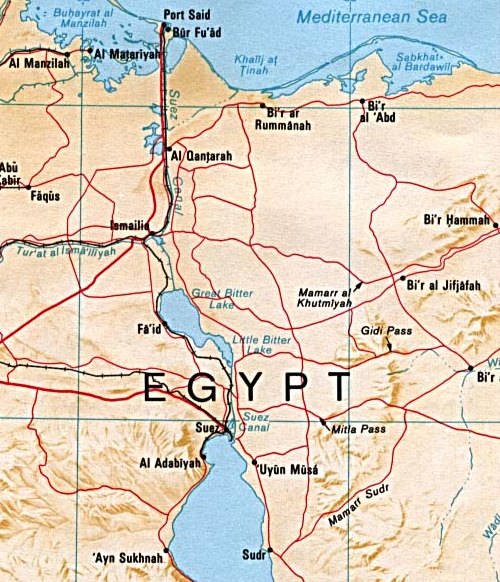|
Osa-class Missile Boat
The Project 205 Moskit (''mosquito'') more commonly known by their NATO reporting name Osa, are a class of missile boats developed for the Soviet Navy in the late 1950s. Until 1962 this was classified as a large torpedo boat. The Osa class is probably the most numerous class of missile boats ever built, with over 400 vessels constructed between 1960 and 1973 for both the Soviet Navy and for export to allied countries. ''Osa'' means ''wasp'' in Russian, but it is not an official name. The boats were designated as "large missile cutters" in the Soviet Navy. Origins While the earlier Komar class were cheap and efficient boats (and the first to sink a warship with guided missiles, destroying the Israeli Navy's ''Eilat''), their endurance, sea keeping, and habitability were modest at best, and the missile box was vulnerable to damage from waves. Among their other weak points were the wooden hull, the radar set lacking a fire control unit, and an inadequate defensive armament consis ... [...More Info...] [...Related Items...] OR: [Wikipedia] [Google] [Baidu] |
HMS Zealous (R39)
HMS ''Zealous'' was a Z-class destroyer of the Royal Navy built in 1944 by Cammell Laird. She served during the Second World War, participating in operations in the North Sea and off the Norwegian coast, before taking part in some of the Arctic convoys. She spent a further ten years in Royal Navy service after the end of the war before being sold to the Israeli Navy, which operated her as INS ''Eilat''. She saw action during the Suez Crisis in 1956 attacking Egyptian ships, and was still active by the outbreak of the Six-Day War in 1967. She was sunk several months after the conflict by missiles launched from several small Egyptian missile boats; this made her the first vessel to be sunk by a missile boat in wartime. It was an important milestone in naval surface warfare, which aroused considerable interest around the world in the development of small manoeuvrable missile boats. Design and construction The Z-class were War Emergency Programme destroyers, intended for general ... [...More Info...] [...Related Items...] OR: [Wikipedia] [Google] [Baidu] |
War Of Attrition
The War of Attrition (; ) involved fighting between Israel and Egypt, Jordan, the Palestine Liberation Organisation (PLO) and their allies from 1967 to 1970. Following the 1967 Six-Day War, no serious diplomatic efforts were made to resolve the issues at the heart of the Arab–Israeli conflict. The 1967 Arab League summit formulated in September the "Khartoum Resolution, three no's" policy, barring peace, International recognition of Israel, recognition, or negotiations with Israel. Egyptian President Gamal Abdel Nasser believed that only military initiative would compel Israel or the international community to facilitate a full Israeli withdrawal from Sinai Peninsula, Sinai, and hostilities soon resumed along the Suez Canal. These initially took the form of limited artillery duels and small-scale incursions into Sinai, but by 1969, the Egyptian Army judged itself prepared for larger-scale operations. On March 8, 1969, Nasser proclaimed the official launch of the War of Attri ... [...More Info...] [...Related Items...] OR: [Wikipedia] [Google] [Baidu] |
Matka Class Missile Boat
The Matka class is the NATO reporting name for a group of hydrofoil missile boats built for the Soviet Navy (Baltic Fleet and Black Sea Fleet). The Soviet designation was Project 206MR Vikhr. Following the 1997 Black Sea Fleet partition treaty all Black Sea Fleet Matka class boats were passed to the Ukrainian Navy. Design These boats are the descendants of the and are a heavily modified version of the . There is only a single foil, the aft part of the hull hydroplanes at high speeds. They are air-conditioned and NBC-sealed. The SS-N-2 launchers are the same type as carried on the Project 61MR ("Mod-Kashin")-class destroyers. Despite initial reports that they were good seaboats, later information revealed that the Soviets regarded them as cramped inside and top-heavy. Of thirteen planned ships, one was cancelled and another started but never completed. All were built in Leningrad. After the breakup of the USSR, Russia discarded many and five went to Ukraine, one of which was l ... [...More Info...] [...Related Items...] OR: [Wikipedia] [Google] [Baidu] |
Turya Class Torpedo Boat
"Turya class" is the NATO reporting name for a class of hydrofoil torpedo boats built for the Soviet Navy and Soviet allies. The Soviet designation was ''Project 206M''. Design The ''Turya'' class is a derivative of the . A hydroplane was added forward to increase speed. These boats can operate at 40 knots at sea state 4 and 35 knots at sea state 5. A heavier twin 57 mm gun was added aft in response to NATO fast attack craft being fitted with the 76 mm OTO Melara gun. The boats are fitted with a helicopter type dipping sonar aft. The 533mm (21 inch) torpedo tubes can fire either anti-ship or anti-submarine torpedoes. Export boats were not fitted with dipping sonar. Ships Soviet Navy 30 (29 in some sources) boats were built for the Soviet Navy between 1972 and 1976. The Builders were at Kolpino and the Ulis yard in Vladivostok. Three boats remain in service with the Russian Navy. *Caspian Flotilla - 3 boats Two boats were transferred to the Latvian Navy. Export ... [...More Info...] [...Related Items...] OR: [Wikipedia] [Google] [Baidu] |
Shershen Class Torpedo Boat
The Shershen class was the NATO reporting name for a class of torpedo boats built for the Soviet Navy and allies. The Soviet designation was Project 206 ''Shtorm''. Development Designated as TKAs ( ru. ''Torpednyy Kater''; eng. ''Torpedo Cutter''), the Project 183 boats were designed as simple fast attack craft suitable for cheap manufacture and easy maintenance. Intended as a successor to the Project 183 "Bolshevik" torpedo boats, development of the new class started in 1956. Like other similar boats, they were to be used near the coast, in good weather and under friendly air cover. The first boat was completed at the Yaroslavl Shipyard and commissioned with the Soviet Navy in October 1960. Production was also organized at the Sredne-Nevskiy and Sosnovskiy Shipyard with a total of 80 boats being built at all three shipyards. A simplified export version was designated Project 206E (NATO designation Mol). Beside Soviet shipyards, Tito's Kraljevica Shipyard in SFR Yugoslavia li ... [...More Info...] [...Related Items...] OR: [Wikipedia] [Google] [Baidu] |
Stenka Class Patrol Boat
The Stenka class is the NATO reporting name for a class of patrol boats built for the Soviet Navy, KGB Border Troops and Soviet Allies. The Soviet designation was Project 205P ''Tarantul'' (not to be confused with the ). The boats are an anti-submarine patrol version of the . Design The Stenka class (Project 205P) is a variant of the (Project 205). The Stenkas used the hull of the Osa class and had a slightly larger crew. The development office of the Almaz Shipyard in Leningrad used the standardized components of the Osa class, in order to develop an anti-submarine warfare (ASW) boat. The anti-ship missile launch containers were replaced by four torpedo tubes but the anti-ship missile related structures and equipment were retained. The living spaces in the Stenkas were improved for long patrol endurance by raising the superstructure in order to create more usable space inside, compared to the Osa class. They also installed a more powerful air conditioner. The drive system is t ... [...More Info...] [...Related Items...] OR: [Wikipedia] [Google] [Baidu] |
Surface-to-air Missile
A surface-to-air missile (SAM), also known as a ground-to-air missile (GTAM) or surface-to-air guided weapon (SAGW), is a missile designed to be launched from the ground or the sea to destroy aircraft or other missiles. It is one type of anti-aircraft warfare, anti-aircraft system; in modern armed forces, missiles have replaced most other forms of dedicated anti-aircraft weapons, with anti-aircraft guns pushed into specialized roles. The first attempt at SAM development took place during World War II, but no operational systems were introduced. Further development in the 1940s and 1950s led to operational systems being introduced by most major forces during the second half of the 1950s. Smaller systems, suitable for close-range work, evolved through the 1960s and 1970s, to modern systems that are man-portable. Shipborne systems followed the evolution of land-based models, starting with long-range weapons and steadily evolving toward smaller designs to provide a layered defence. T ... [...More Info...] [...Related Items...] OR: [Wikipedia] [Google] [Baidu] |
9K32 Strela-2
The 9K32 Strela-2 (; NATO reporting name SA-7 Grail) is a light-weight, shoulder-fired, surface-to-air missile or MANPADS system. It is designed to target aircraft at low altitudes with passive infrared homing, infrared-homing guidance and destroy them with a high-explosive warhead. Broadly comparable in performance with the United States Army, US Army FIM-43 Redeye, the Strela-2 was the first Soviet Union, Soviet man-portable SAM – full-scale production began in 1970. While the Redeye and 9K32 Strela-2 were similar, the missiles were not identical. The Strela-2 was a staple of the Cold War and was produced in huge numbers for the Soviet Union and their allies, as well as revolutionary movements. Though since surpassed by more modern systems, the Strela and its variants remain in service in many countries, and have seen use in nearly every regional conflict since 1972. Development The end of World War II led to a major shift in Soviet defence policy. The advent of long r ... [...More Info...] [...Related Items...] OR: [Wikipedia] [Google] [Baidu] |
Close-in Weapon System
A close-in weapon system (CIWS ) is a point-defense weapon system for detecting and destroying short-range incoming missiles and enemy aircraft which have penetrated the outer defenses, typically mounted on a naval ship. Nearly all classes of larger modern warships are equipped with some kind of CIWS device. There are two types of CIWS systems. A gun-based CIWS usually consists of a combination of radars, computers, and rapid-firing multiple-barrel rotary cannons placed on a rotating turret. Missile-based CIWSs use either infra-red, passive radar/ ESM, or semi-active radar terminal guidance to guide missiles to the targeted enemy aircraft or other threats. In some cases, CIWS are used on land to protect military bases. In this case, the CIWS can also protect the base from shell and rocket fire. Gun systems A gun-based CIWS usually consists of a combination of radars, computers and rotary or revolver cannon placed on a rotating, automatically aimed gun mount. Examples of ... [...More Info...] [...Related Items...] OR: [Wikipedia] [Google] [Baidu] |
Identification Friend Or Foe
Identification, friend or foe (IFF) is a combat identification system designed for command and control. It uses a transponder that listens for an ''interrogation'' signal and then sends a ''response'' that identifies the broadcaster. IFF systems usually use radar frequencies, but other electromagnetic frequencies, radio or infrared, may be used. It enables military and civilian air traffic control interrogation systems to identify aircraft, vehicles or forces as friendly, as opposed to neutral or hostile, and to determine their bearing and range from the interrogator. IFF is used by both military and civilian aircraft. IFF was first developed during World War II, with the arrival of radar, and several friendly fire incidents. IFF can only positively identify friendly aircraft or other forces. If an IFF interrogation receives no reply or an invalid reply, the object is not positively identified as foe; friendly forces may not properly reply to IFF for various reasons such as e ... [...More Info...] [...Related Items...] OR: [Wikipedia] [Google] [Baidu] |
Electronic Warfare Support Measures
In military telecommunications, electronic support (ES) or electronic support measures (ESM) gather intelligence through passive "listening" to electromagnetic radiations of military interest. They are an aspect of electronic warfare involving actions taken under direct control of an operational commander to detect, intercept, identify, locate, record, and/or analyze sources of radiated electromagnetic energy for the purposes of immediate threat recognition (such as warning that fire control radar has locked on a combat vehicle, ship, or aircraft) or longer-term operational planning.Polmar, Norman "The U. S. Navy Electronic Warfare (Part 1)" ''United States Naval Institute Proceedings'' October 1979 p.137 Thus, electronic support provides a source of information required for decisions involving electronic protection (EP), electronic attack (EA), avoidance, targeting, and other tactical employment of forces. Electronic support data can be used to produce signals intelligence ... [...More Info...] [...Related Items...] OR: [Wikipedia] [Google] [Baidu] |









